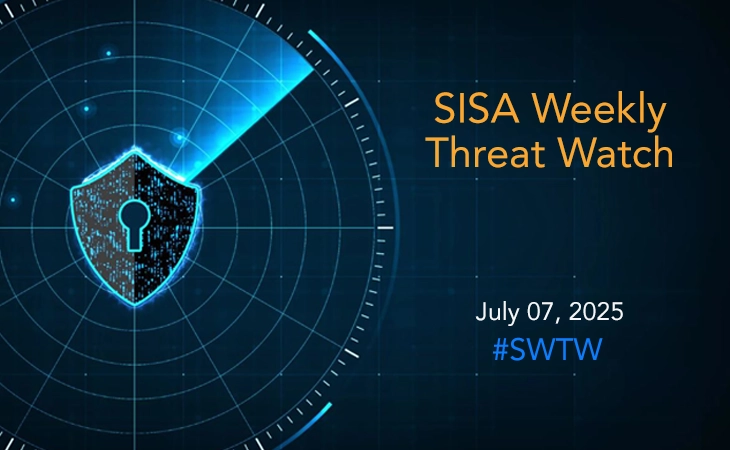

Data Security vs Data Privacy vs Data Protection: Understanding the Key Differences
Explore the essential differences and intersections of data security, data privacy, and data protection, and learn how to safeguard your digital footprint effectively.
In an era where digital boundaries are continuously pushed and blurred, the concepts of data security, data privacy, and data protection have emerged as critical pillars of the digital domain. With each click, share, and download, we navigate through a vast digital landscape, leaving behind digital footprints that are valuable, vulnerable, and in need of protection. Yet, amidst this complexity, confusion often arises: What sets data security apart from privacy and protection? Are they interchangeable, or do they serve distinct purposes?
This blog embarks on a deep dive into the essence of each one of them, shedding light on their unique characteristics, how they intertwine, and their paramount importance in the digital realm.
The Essence of Data Security
It refers to the measures and protocols implemented to protect data from unauthorized access, corruption, or theft throughout its lifecycle. It encompasses a wide array of practices, from encryption and tokenization to the deployment of antivirus software and firewalls. It is the shield that guards our digital assets against external threats and breaches, ensuring the integrity and confidentiality of data as it is stored, transmitted, or processed.
Key Strategies for Enhancing Data Security:
- Encryption: Scrambling data into an unreadable format, which can only be deciphered with the correct decryption key.
- Access control: Ensuring only authorized individuals have access to certain data, minimizing the risk of unauthorized breaches.
- Regular audits: Conducting periodic reviews and audits to identify and rectify potential vulnerabilities.
Unraveling Data Privacy
While data security focuses on protecting data from external threats, data privacy centers on the use and governance of personal data. It pertains to the rights of individuals regarding their personal information and how this information is collected, processed, and shared. Data privacy regulations, such as the General Data Protection Regulation (GDPR) in the European Union, the California Consumer Privacy Act (CCPA) in the United States and the Digital Personal Data Protection (DPDP) Act in India, have been established to protect individuals’ privacy rights and ensure that organizations handle personal data responsibly and transparently.
Steps to Ensure Data Privacy:
- Clear privacy policies: Developing and communicating clear privacy policies that outline how personal data is collected, used, and protected.
- Consent management: Ensuring that individuals provide informed consent before their personal data is collected or processed.
- Data minimization: Collecting only the data that is necessary for the specified purpose, thereby reducing the risk of privacy breaches.
The Role of Data Protection
Data protection is the umbrella term that encompasses both data security and data privacy. It involves implementing policies, controls, and procedures to ensure the confidentiality, integrity, and availability of data. Data protection strategies aim to prevent data breaches and leaks while ensuring that data is used ethically and in compliance with legal and regulatory requirements. Data protection is not just a technical issue; it is a comprehensive approach that includes legal, organizational, and ethical considerations.
Frameworks for Effective Data Protection:
- Data backup and recovery: Establishing robust data backup and recovery processes to safeguard data against loss or corruption.
- Incident response plans: Developing and maintaining an incident response plan to swiftly address data breaches or security incidents.
- Compliance with regulations: Adhering to relevant data protection regulations and standards to ensure legal compliance and protect stakeholder interests.
The Interconnection: How Do They Work Together?
While data security, privacy, and protection are distinct concepts, they are inextricably linked in the realm of information management. Data security provides the tools and techniques to protect data from threats, while data privacy focuses on the rules and regulations that govern how data is used and shared. Data protection brings these elements together, offering a comprehensive approach to safeguarding data against unauthorized access and ensuring that data privacy laws are followed.
For instance, implementing strong data security measures (like encryption) is crucial for protecting personal information, thus supporting data privacy. Similarly, adhering to data privacy regulations necessitates the use of data protection and security measures to prevent unauthorized access or disclosure of personal information.
Implementing Effective Strategies
To navigate the complexities of data security, privacy, and protection, organizations must adopt a multifaceted approach. Here are some strategies to consider:
- Conduct regular risk assessments: Identify potential vulnerabilities in your data management practices and address them proactively.
- Stay informed about compliance requirements: Understanding and adhering to relevant data privacy laws and regulations is crucial for legal compliance and building trust.
- Implement robust security measures: Use encryption, secure access controls, and leverage data discovery and classification tools to protect against unauthorized access and data breaches.
- Educate stakeholders: Raise awareness about the importance of data privacy and security among employees, customers, and partners.
- Develop a comprehensive data protection plan: This plan should encompass aspects of data security and privacy, tailored to your specific needs and regulatory requirements.
Conclusion
In today’s interconnected world, the significance of data security, privacy, and protection cannot be overstated. While each concept has its own focus, together they form a comprehensive framework for managing and safeguarding digital information against the ever-evolving landscape of threats. By understanding these distinctions and how they complement each other, businesses and individuals can better navigate the complexities of the digital world, ensuring that data remains secure, private, and protected.
FAQs
Can you have data privacy without data security?
No, data privacy relies on data security measures to protect personal information from unauthorized access or breaches.
Are all data protection laws the same?
No, data protection laws vary by country and region. Organizations must be aware of and comply with the regulations applicable to their operations and the data subjects they handle.
How often should data security measures be reviewed?
Regularly. It’s essential to continuously assess and update data security measures to address evolving threats and vulnerabilities.
Latest
Blogs
Whitepapers
Threat-a-Licious
Customer Success Stories

SISA is a Leader in Cybersecurity Solutions for the Digital Payment Industry. As a Global Payment Forensic Investigator of the PCI Security Standards Council, we leverage forensics insights into preventive, detective, and corrective security solutions, protecting 1,000+ organizations across 40+ countries from evolving cyberthreats.
Our suite of solutions from AI-driven compliance, advanced security testing, agentic detection/ response and learner focused-training has been honored with prestigious awards, including from Financial Express, DSCI-NASSCOM and The Economic Times.
With commitment to innovation, and pioneering advancements in Quantum Security, Hardware Security, and Cybersecurity for AI, SISA is shaping the future of cybersecurity through cutting-edge forensics research.
Company
Resources
Quick Links
Copyright © 2025 SISA. All Rights Reserved.
 USA
USA India
India APAC
APAC Middle East
Middle East Global
Global





 Facebook
Facebook Linkedin
Linkedin  X
X Youtube
Youtube





